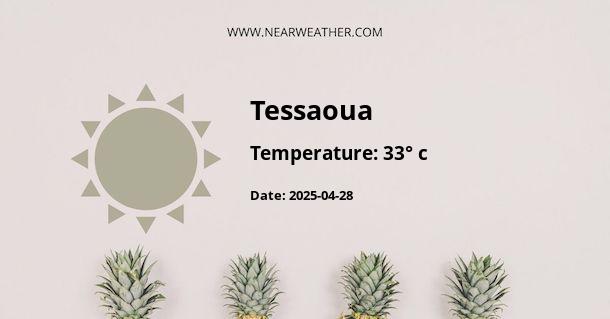Tessaoua, Niger: Climate and Weather Year Round
Tessaoua is a town located in the Maradi Region of Niger, in West Africa. As with many locations in this region, Tessaoua experiences a hot desert climate, characterized by high temperatures, low rainfall, and a significant temperature variation throughout the year. Understanding the climate and weather patterns of Tessaoua is essential for residents, travelers, and businesses operating in the area. In this article, we will explore the climate and weather of Tessaoua in detail.
Temperature
The town of Tessaoua experiences scorching temperatures throughout the year, with little variation between seasons. The maximum temperatures in Tessaoua reach their peak during the hot season, which typically lasts from April to June. During this period, average daily temperatures can soar above 40 degrees Celsius (104 degrees Fahrenheit). The hottest month is typically May, with average maximum temperatures exceeding 42 degrees Celsius (108 degrees Fahrenheit).
Even during the cooler months, such as December and January, temperatures in Tessaoua remain relatively high, with average maximum temperatures around 30 degrees Celsius (86 degrees Fahrenheit). The minimum temperatures during the cooler months can drop to around 15 degrees Celsius (59 degrees Fahrenheit).
The temperature in Tessaoua is influenced by its location in the Sahel region, where the proximity to the Sahara Desert contributes to the arid and hot conditions experienced throughout the year.
Rainfall
Tessaoua is located in a region with a pronounced dry season, with little rainfall throughout the year. The town experiences a short rainy season, which typically occurs between June and September. During this period, Tessaoua receives the majority of its annual rainfall. However, even during the rainy season, the amount of precipitation is relatively low.
On average, Tessaoua receives around 300-400 millimeters (11.8-15.7 inches) of rainfall annually. The rainfall is highly variable from year to year, with some years experiencing below-average precipitation. The months of August and September tend to receive the highest amount of rainfall, with occasional thunderstorms and heavy showers.
The dry season in Tessaoua occurs between October and May, with little to no rainfall. During this period, the town experiences hot and dry conditions, with a high risk of drought. The lack of rainfall, combined with the high temperatures, contributes to the arid desert climate of Tessaoua.
Wind
The town of Tessaoua is influenced by the Harmattan wind, a dry and dusty wind that blows from the Sahara Desert. The Harmattan wind typically occurs between November and February, bringing with it dust and sand particles. This wind can significantly reduce visibility and create dusty conditions in Tessaoua and the surrounding areas.
The Harmattan wind also affects the temperature in Tessaoua, causing a drop in temperatures during its occurrence. However, despite the temporary relief from the scorching heat, the Harmattan wind can also bring discomfort due to the dry and dusty conditions it creates.
Summary of Tessaoua's Climate
To summarize, Tessaoua experiences a hot desert climate characterized by high temperatures, low rainfall, and a significant temperature variation throughout the year. The hot season lasts from April to June, with average maximum temperatures exceeding 40 degrees Celsius (104 degrees Fahrenheit). The cooler months, such as December and January, still have relatively high temperatures, with average maximum temperatures around 30 degrees Celsius (86 degrees Fahrenheit).
Tessaoua receives the majority of its rainfall during the short rainy season between June and September, with an annual average of 300-400 millimeters (11.8-15.7 inches) of rainfall. The town experiences a dry season between October and May, with little to no rainfall.
The Harmattan wind, which blows from the Sahara Desert, affects Tessaoua between November and February. This wind brings dry and dusty conditions, reducing visibility and causing a temporary drop in temperatures.
Understanding the climate and weather patterns of Tessaoua is crucial for individuals and businesses in the area to plan their activities accordingly. Whether it's preparing for the scorching heat during the hot season or being aware of the dry and dusty conditions brought by the Harmattan wind, knowledge of Tessaoua's climate is essential for navigating the region's weather challenges.
A - Tessaoua's Latitude is 13.757370 & Longitude is 7.987400.
A - Weather in Tessaoua is 21° today.
A - Climate Conditions in Tessaoua shows clear sky today.
A - Humidity in Tessaoua is 19% today.
A - Wind speed in Tessaoua is 16.78 km/h, flowing at 68° wind direction. today.
